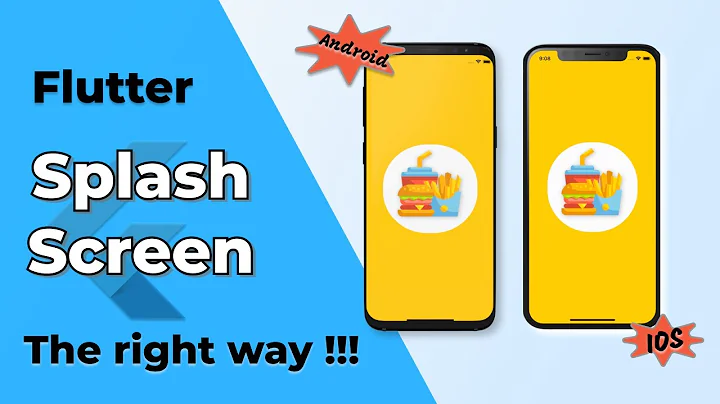Difference between launch image and splash screen
Solution 1
Launch image is the image that appears when you launch your app, the images you put in the xcode (iphone, iphone retina, ipad landscape, ipad landscape retina, ipad portrait and ipad portrait retina) Apple recomends using a screenshot of your app main window, so it appears that your app launch faster (I use a screenshot without buttons)
Splass screen is, for example, the screens the games use, where you can see the company logo and some other info, some of them even use 2 or 3 splass screens. You have to include them programmatically
Solution 2
Wow, old question with no accepted or highly-upvoted answer, bubbling to the front page thanks to an edit. Guess I may as well try my hand at clearing things up?
Launch Image (or Launch Screen)
This is displayed by the OS itself, and appears only while the OS is loading your app (that is, before your process is running and any of your own code gets a chance to execute.
Because your app has no running code to handle display of the launch image, the way you provide one is part of your Xcode project's build-time configuration: Either you provide a LaunchScreen.storyboard, or a set of static launch images — one for each device screen size you support.
Apple's Human Interface Guidelines recommend that your launch image be a rough facsimile of the initial UI of your app. There are a couple of reasons for that:
The launch screen is displayed only briefly before your app takes over and can display its own UI, so having the launch image look like the actual UI makes the user feel more like they're jumping right into your app instead of having to wait for something else.
The launch screen is displayed only briefly, so if you display something that doesn't look like your initial UI, the user may see it flash and go away before they can get a decent look at it.
(Because your launch screen should look like actual UI, and because there are many screen sizes to support, the storyboard approach is preferred — you can use Auto Layout to ensure that your fake UI adapts to different screen sizes just like your real UI would. Xcode then generates the necessary images at build time.)
Splash Screen or About Window
This is what you see in many apps that don't follow Apple's guidance, and it comes in two forms (used separately or together):
Using the Launch Screen system to display content that doesn't look like the app's initial UI — instead, for example, it might be a logo or some other branding element, or might include static text like copyright notices, credits, or version information.
After the app has launched (and thus has control of the screen to display whatever it wants), continuing to display logos or branding or other passive content instead of a usable UI.
The second case is recommended against, but sometimes unavoidable — game engines, in particular, tend to take awhile to start up, so it might be okay to have a "loading" screen. (If so, your launch image should look like your loading screen, so that the user doesn't feel like they're separately waiting for your app to launch and then load.)
The worst offenders are apps that don't really have any extra "loading" work to do, but use a splash screen as their launch image, and then programmatically continue to display that image for an arbitrary amount of time so that the user gets more chance to see it. (And has to wait for it to get out of the way, or manually dismiss it, before actually using the app.)
Solution 3
Launch Image is displayed when the app loads.
Splash screen means, that you display a view with about information as your startscreen. Your User should use your app immediately.
Solution 4
The launch image is designed to make the perceived launch time of you app feel faster by showing something resembling the interface that will be loaded as quickly as possible. Displaying a logo does nothing but draw attention to how quickly your app loads and adds nothing to the user’s experience.
If your bundle have default.png then apps takes as a launch image and it remains on screen for 3 seconds
Related videos on Youtube
Warrior
I am a software engineer.I have to learn lot in this field.
Updated on September 18, 2021Comments
-
Warrior over 2 years
I was going through iOS Human Interface Guidelines.
It was mentioned as
Display a launch image that closely resembles the first screen of the application. This practice decrease the perceived launch time of your application.
Avoid displaying an About Window or a splash screen. In general, try to avoid providing any type of startup experience that prevents people from using your application immediately.
What is the difference between a launch image and a splash screen?








